#yabassi
Text
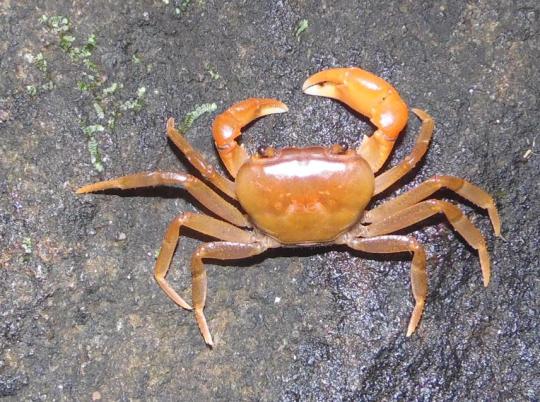
Today's crab is: caramelized
#daily-crabbys#crab#louisea yabassi#apparently not a lot is known about these guys! theyre very rare#theyre pretty too#they look like caramel or a polished copper
150 notes
·
View notes
Photo

(▶︎ Anbessa | Akalé Wubé & Manu Dibango | Akalé Wubéから)
Anbessa by Akalé Wubé & Manu Dibango
En décembre 2013, Alain Pilot et sa « Bande Passante » sur RFI célèbrent les 80 ans de Manu Dibango en réunissant autour du grand maître de la musique africaine des invités prestigieux dont les ambassadeurs de l’Ethio-Jazz : Akalé Wubé. Le groupe décide de reprendre en live sur les ondes African Pop Session et Ekedi – toutes deux composées et enregistrées par le saxophoniste Camerounais au début des années 70 – et sont très vite rejoints par Manu Dibango armé de son saxophone.
Deux enregistrements live de ces versions seront tirés de cette rencontre inédite et improvisée.
Une grande complicité s’installe très vite entre eux et, quelques mois plus tard, Akalé Wubé invite Manu Dibango sur leur titre Anbessa (Le Lion en Amharique) spécialement composé pour lui rendre hommage. Cette nouvelle collaboration leur permettra de partager des scènes à plusieurs reprises au cours des années suivantes. C’est ensuite sous l’impulsion de Manu Dibango, et avec le souvenir de cette live session chez RFI, qu’ils reprennent ensemble la route du studio afin qu’Akalé Wubé arrange et ré- enregistre avec lui 5 autres pépites méconnues de son répertoire : La Colère des Dieux, Du Bush a Bush, Gentlemen de Camp Yabassi, Otetena Munja et Peaceful Homeland. Malheureusement, Le Lion ne pourra se rendre au studio du groupe parisien début 2020 pour y poser ses derniers solos, le destin en ayant décidé autrement...
Akalé Wubé rend aujourd’hui un hommage fort et sincère à cette amitié à travers l’album Anbessa – réunissant l’intégralité des morceaux écrits par ou pour Manu Dibango et interprétés par le groupe – sur vinyle. クレジット2022年4月23日リリース
Saxophone : Manu Dibango
Drums : David Georgelet
Bass : Oliver Degabriele
Guitar : Loïc Réchard
Flutes / Sax : Etienne de la Sayette
Krar / trumpet / Percussions : Paul Bouclier
0 notes
Text
Cameroun: Concours ISH de l'université de Douala 2022/2023
Cameroun: Concours ISH de l’université de Douala 2022/2023
Cameroun: Concours ISH de l’université de Douala 2022/2023
Concours d’entrée à l’Institut des Sciences Halieutiques (ISH) de l’Université de Douala à Yabassi, au titre de l’année académique 2022-2023.
Competitive Entrance Examination into the Institute of Fisheries and Aquatic Sciences of the University of Douala at Yabassi for the 2022-2023 academic year.
Les anciens sujet récommendés pour…

View On WordPress
0 notes
Text
Université de Douala : les pièces à fournir Concours ISH (Yabassi) 2022-2023
Université de Douala : les pièces à fournir Concours ISH (Yabassi) 2022-2023
Pour les candidats nationaux
une demande manuscrite timbrée au tarif réglementaire.Une fiche de candidature disponible au bureau de liaison de l’ISH, sis à l’ancien décanat de la Faculté de Génie Industrielle (FGI, Douala), au service de la scolarité de l’ ISH (Yabassi), de la FASA (Dschang), du CRESA Forêt-Bois (Yaoundé), au service de la scolarité de l’Ecole des Sciences et de Médecine…

View On WordPress
0 notes
Video
youtube
Emmanuel N'Djoké Dibango (12 December 1933 - 24 March 2020)
‘Manu’ Dibango was a Cameroonian musician and songwriter who played saxophone, Vibraphone, Pianist. He developed a musical style fusing jazz, funk, and traditional Cameroonian music.
Harbouring a deep and ongoing concern for the well-being of humanity, he often used his music and his influence to garner support for various humanitarian causes.
In recognition of his contributions to the development of music as well as his cultivation of cross-cultural dialogue—particularly between Europe, Africa, and North America—through the arts, he was named the UNESCO Peace Artist of the Year in 2004.
He died from Covid-19.
Soul Makossa - Manu Dibango (Original)
This song was released in 1972 and started the Disco movement!
Soul Makossa meaning: "I will dance." The lyrics are written phonetically and not in the actual language intended
#art#music#manu dibango#rip#cameroon#africa#jazz#funk#saxo#saxophone#covid-19#coronvirus#yabassi#duala#makossa#afrofunk#afrobeat#rumba#vibraphone#sound#dance#jazz fusion#pianist#peace#unesco#humanity#soulmakossa#wakafrica#legend#disco
67 notes
·
View notes
Link
On this week's programme:
Thiago França, saxophonist with Metá Metá, leads a carnival big
band as a vehicle for inclusion and respect.Cumbia Chicharra are
an 8-piece French band playing cumbia and other tropical styles.
Meridian Brothers’ Eblis Alvarez joins forces with Iván Medellín for
a vallenato hoe-down.
Veteran Colombian bullerengue singer Petrona Martinez invites
some seminal female cultural figures to join her. Bareto are a
Peruvian band with their individual take on cumbia.Susana Baca
is a leading figure in Afro-Peruvian culture.
Portuguese singer Cristina Clara combines fado with chorinho and
folk styles. Soundway Records has been researching the Spanish
Balearic sound of the 1980s. Da Iguana is a “beat-loving sneaky
reptile” from France. Argentinian producer Chancha via Circuito
provides setting for the voice of fellow-countrywoman Luvi Torres.
Cuban Funk star Cimafunk gives guest spot to Chicago rapper Lupe
Fiasco on the new single. Ben LaMar Gay is a Chicagoan singer,
composer and multi-instrumentalist. Kurt Elling, jazz vocal supremo,
goes funky with Charlie Hunter and Butcher Brown. Irreversible
Entanglements are a Philadelphia-New York-DC jazz collective with
Moor Mother on vocal. Kondi Band are based on Sorie Kondi’s Sierra
Leonian thumb piano with LA-London production.Franck Biyong has
recorded a tribute to fellow Cameroonian Manu Dibango.
Smithsonian’s “Village Out West” collects rare recordings from the
1960’s Berkeley folk festivals. John Francis Flynn is another new
voice from the vanguard of Irish folk. Justin Adams teams up with the
leader of Canzoniere Grecanico Salentino for a guitar-percussion
(& violin) tour de force. Brazilian composer Corciolli enlists the
Armenian duduk playing of Arsen Petrosyan.
PLAYLIST
1.Thiago França & A Espetacular Charanga do França: “Hasta La
Cumbia”. From “Thiago França presents A Espetacular Charanga
do França: The Importance of being Espetacular” (Mais Um 2021).
2.Cumbia Chicharra: “Guatón Feliz”. From “El Grito” (Discos la
Chicharra 2021).
3.Meridian Brothers y Conjunto Media Luna: “Paz En La Tierra”.
From “Paz
En La Tierra” (Bongo Joe 2021).
4.Petrona Martinez feat. Susana Baca : “El Niño Roncón
(Bullerengue Chalupiao)”. From “Ancestras”
(Chaco World Music 2021).
5.Bareto: “Tu Recuerdo” (Single on Agogo 2021).
6.Susana Baca: “Negra de Alma”.
7.Susana Baca: “La Herida Oscura”.Both from “Palabras Urgentes”
(Real World 2021).
8.Cristina Clara: “Real e Abstrato”. From forthcoming album “Lua
Adversa” (Sony Portugal).
9.Marengo: “Puente de Esperanza”. From the forthcoming compilation
“Ritmo Fantasía: Balearic Spanish Synth-Pop, Boogie & House
1982-1992” (Soundway).
10.Da Iguana: “Sombra Selvatica”.
11.Da Iguana: “Reg Spirits”. Both from “Sombras Y Sueños”
(Playground Records 2021).
12.Chancha via Circuito & Luvi Torres: “Sano”. From the forthcoming
EP “Ceremonia” (Wonderwheel).
13.Cimafunk & Lupe Fiasco: “Rompelo”. Single from the forthcoming
album
“El Alimento” (Cimafunk).
14.Ben LaMar Gay: “Sometimes I Forget How Summer Looks On You”
(Single on International Anthem 2021).
15.Kurt Elling: “Sassy”. From “SuperBlue” (Edition 2021).
16.Irreversible Entanglements: “Open The Gates” (Single on
International Anthem 2021).
17.Kondi Band: “Shake Your Tumba”. From “We Famous” (Strut 2021).
18.Franck Biyong: “Gentlemen de Camp Yabassi”. From “The
Afrovision Secret” (Franck Biyong).
19.The Sweet’s Mill Mountain Boys with Kenny Hall: “Fire On The
Mountain”
20.Mississippi Fred McDowell: “Don’t Mistreat Nobody (‘Cause you
got a few dimes)”.
21.Rev. Gary Davis: “Hesitation Blues”.All from the compilation “The
Village Out West: The Lost Tapes of Alan Oakes - field recordings of
the 1960s California folk music scene” (Smithsonian Folkways 2021).
22.John Francis Flynn: “Cannily Cannily”. From “I Would Not Live
Always” (River Lea 2021).
23.Justin Adams & Mauro Durante: “Amara Terra Mia”. From the
forthcoming album “Still Moving” (Ponderosa).
24.Corciolli & Arsen Petrosyan: “Yerazel”. >From “No Time But Eternity”
(Azul Music 2021).
#dj nigel wood#ear to the globe#dublincityfm#103.2Fm#africa#cameroon#tribute#Manu Dibango#Franck Biyong#franckbiyong#The Afrovision Secret#Gentlemen de Camp Yabassi
2 notes
·
View notes
Text
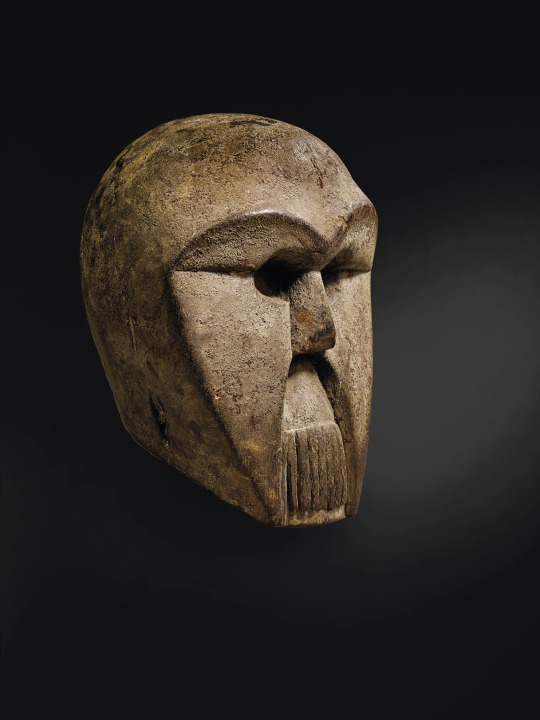

A BASSA HEADCREST
YABASSI VILLAGE, CAMEROON
Christie’s
17 notes
·
View notes
Text
Blacks in Germany Fun Fact - 10/18/2018
I didn’t know that from 1905 to 1908, around 200,000 people were killed in combat areas during the Maji Maji War in German-East Africa. That’s only three years y’all. That’s around 5,556 people a month, which is around 185 people per day.
The rise of World War I in 1914 came with an execution of 200 resisters in Cameroon, which included Rudolf Manga Bell, Ludwig Mpundo Akwa and Martin-Paul Samba.
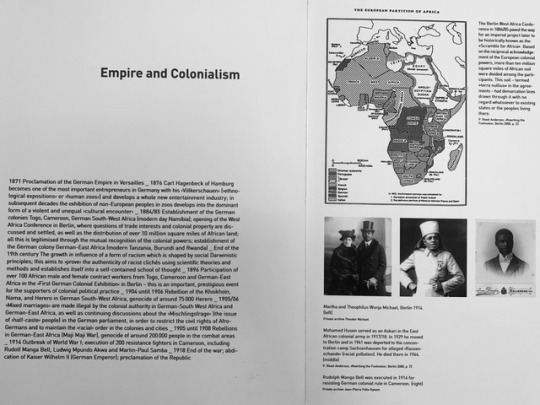
Rudolf Douala Manga Bell was a Cameroonian hero. Not only was he the first son of King Manga Ndumbe Bell of the Douala people, and a scholar that excelled through primary school, secondary school, and law studies at university, he was a husband to the beautiful Emily Engome Dayas. He bridged the gap between the Douala people and Bali, Balong, Dschang, Foumban, Ngaoundéré, Yabassi, and Yaoundé by simply reaching out th their leaders. Read more about him at: https://wp.me/pCOKF-1oI
1 note
·
View note
Text

Remembering Emmanuel N'Djoké "Manu" Dibango on the day of his birth, Cameroonian musician and songwriter who played saxophone and vibraphone. He developed a musical style fusing jazz, funk, and traditional Cameroonian music. His father was a member of the Yabassi ethnic group, while his mother was a Duala. He was best known for his 1972 single "Soul Makossa". R.I.P.
0 notes
Photo

@or_.blanc 🍒❤️ . Envoies ta foto/vid par message pour etre posté(e) Follow @cameroun_best | DM your pic/vid for feature Claim Cameroon in your bio/posts . #africangirlskillingit #africanskillingit #beautecamerounaise #beauty #cameroun #camerounbest #camerounaise #camerounais #camerounaises #cameroon #cameroonian #cameroonfashion #cameroonbest #douala #doualagirl #doualagirls #fashion #fillecamerounaise #finance #fitness #health #lifestyle #luxury #nweworldwide #travel #team237 #yaounde #yaoundegirl #yaoundegirls #237 (at Yabassi) https://www.instagram.com/p/B_tP10Yl_oO/?igshid=sld1ou1na9cd
#africangirlskillingit#africanskillingit#beautecamerounaise#beauty#cameroun#camerounbest#camerounaise#camerounais#camerounaises#cameroon#cameroonian#cameroonfashion#cameroonbest#douala#doualagirl#doualagirls#fashion#fillecamerounaise#finance#fitness#health#lifestyle#luxury#nweworldwide#travel#team237#yaounde#yaoundegirl#yaoundegirls#237
0 notes
Photo
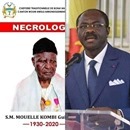
Grand patriarche et chef Sawa , Sa Majesté MOUELLE KOMBI Guillaume, Chef Traditionnel de Bona'Anja-Siga Bonjo, Canton Wouri-Bwelé, arrondissement de Yabassi (Nkam), et géniteur de l'actuel ministre des sports Camerounais est décédé à l'Hôpital Général de Douala des suites de longue maladie. Âgé de 90 ans, il a fêté, en janvier dernier, ses 36 ans de règne sur le trône des Bona'Anja, qu'il avait hérité de son père Walther Heinrich Kombi Djengue Ndoumé en 1984,alors grand père du ministre. [ 52 more words ] https://zonefoot.net/2020/04/06/camerounnecrologie-narcisse-mouelle-kombi-pleure-son-geniteur/
0 notes
Text
Cameroon: South West - People Begin Returning Home
Cameroon: South West – People Begin Returning Home

Reports from Bus Stations in Bangem, Tiko, Limbe, Kumba, Muyuka, Mamfe, Tombe and in Buea where Cameroon Tribune observed affirmed that there has been a progressive influx of passengers from towns like Douala, Nkongsamba, Yabassi, Yaoundé since October 10, 2018. The travellers are returning after making one of the greatest mass exodus recorded in contemporary times.
It was triggered by rumours…
View On WordPress
0 notes
Text
Le saxophoniste et chanteur, icône de la world music Manu Dibango est mort le mardi 24 mars après avoir été contaminé par le Covid-19. Il avait 86 ans.
Il a vécu 8 décennies dont 6 consacrées à la musique.
Manu est et reste une des personnalités les plus marquantes de ces 50 dernières années. Père de la world musique, premier disque d’or d’un artiste africain aux Etats-Unis avec « Soul Makossa » qui n’en finit plus d’être samplé.
De son vrai non Emmanuel N’Djoké Dibango, dit Manu Dibango, est né à Douala, au Cameroun le 12 décembre 1933. Ses parents sont originaires d’ethnies différentes : son père est yabassi, et sa mère douala. Sa famille est de confession protestante, et sa mère dirige la chorale du temple.
En 1949, il se rend à Saint-Calais, dans le Nord de la France pour poursuivre ses études et passer son bac. C’est à Chartre qu’il découvre le jazz au début des années 50. Il apprend le piano, puis le saxophone, et commence à se produire sur scène. Son père désaprouve son style de vie et lui coupe les vivre en 1956.
C’est à Bruxelles qu’il rencontre sa femme Coco et que son jazz s’africanise au contact du milieu congolais Belge. Joseph Kabasélé Tshamala, dit Grand Kalle l’engage dans son orchestre et ils enregistrent plusieurs disques qui remportent le succès en Afrique et les amènent à Kinshasa, au Congo où Manu lance le twist en 1962 dans sa propre boite. Le succès est phénomènal. Mais le musicien ne se sent pas bien accueilli dans son pays car créer un nouveau lieu de nuit lui attire beaucoup de problèmes. Il décide de retourner en France.
En 1967, Manu Dibango trône à la tête de son premier Big Band et développe son style musical novateur pour une série d’émissions télévisés avec des acteurs comme Dick Rivers ou Nino Ferrer, pour lequel il joue de l’orgue Hammond, puis du saxophone, et finit par diriger son orchestre.
En 1972, il enregistre la face B d’un 45 tours « Soul Makossa », qui sera samplé sur « Wanna be Starting Something » de Michael Jackson et « Please don’t stop the music » de Rihanna. Manu Dibango fait la conquête des Etats-Unis avec un tournée qui remporte un vif succès.
De 1975 à 1979, il dirige à Abidjan l’Orchestre de la Radio-Télévision ivoirienne. Ses parents décédent en 1976, et deux ans plus tard Manu entregistre un album avec des musiciens nigérians (« Home Made ») avant de s’envoler pour la Jamaique. La bas, il enregistre des sessions au côtés de la célèbre section rythmiques de reggae Sly Dunbar.
Dans les années 80, il collabore en outre avec Serge Gainsbourg. Sorti en 1982, son album « Waka Juju » consacre son retour à l’afro-sound. « Surtention » (1984) offre une rencontre entre hip-hop et tradition africaine. Le 14 mai 1986, Manu Dibango est décoréede la médaille des Arts et des Lettres par le ministre de la culture française de l’époque, Jack Lang.
En 1992, Yves Bigot lui propose d’enregisrer « Wakafrica », un album de reprises des plus grands tubes africains. Cet album parait dans le monde entier et permet à Manu Dibango de revisiter le patrimoine de la chanson en invitant les ténors Youssou N’Dour, Salif Keita, Papa Wemba, Angélique Kidjo, Peter Gabriel, Manu Katché,… Le single « Biko » sera remixé à Atlanta par Brendan O’Brien. C’est cette même année que manu reçoit une Victoire de la Musique pour le deuxième volume des Négropolitaines.
L’album « Lamastabastani »parait en 1996 et s’inspire de la disparition de sa femme l’année précédente. Manu Dibango enchaine deux albums, un spectacle aux côtés de Ray Lema, la musique du film d’animation Kirikou et les bêtes sauvages en 2005, un album en hommage à Sydney Bechet et à La Nouvelle Orléans…
Source http://www.jazzradio.fr
This slideshow requires JavaScript.
Un artiste ne meurt jamais
Repose en paix
Ton non restera à Jamais gravé dans les anales de l’histoire de la musique mondiale.
Romaric Willianson Tchouanté
25/03/2020
Hommage à Manu Dibango : Le saxophoniste et chanteur, icône de la world music Manu Dibango est mort. Le saxophoniste et chanteur, icône de la world music Manu Dibango est mort le mardi 24 mars après avoir été contaminé par le Covid-19.
0 notes
Text
Intensive Production of the African Catfish Clarias gariepinus (Burchell, 1822) Fingerlings Using Local Materials in Recycled Water | Chapter 06 | Advances in Agriculture and Fisheries Research Vol. 1
This study was conducted with the aim of producing intensively and cheaply the fry of the African catfish Clarias gariepinus at the Akak Essatolo Fish Farm in Ebolowa, South Region Cameroon. For that, 10 broodstock of C. gariepinus, were used for the artificial reproduction. Pituitary extracts and Ovaprim hormones were used to induce oocytes maturation on females. Eggs were obtained by abdominal pressure of the female. Wicks (or Local raffia fibbers (Raphia regalis)) and mesh frame were used as incubators of fertilized eggs. 12 experimental batches each consisting of 50 g of fertilized eggs were spread in triplicates on both types of incubators previously arranged in closed-circuit tanks. Fertilized eggs were enumerated by direct observation. At the end of the hatching (D0) and of vitelline resorption (D3), larvae of each experimental lot were counted. The results obtained indicate that: Similar (P=.05) absolute and relative fecundities used were recorded in all treatments. Female eggs induced with pituitary extracts and incubated on raffia fibbers recorded lower (P˂.05) fertilization and hatching rates. All other treatments were comparable (P=.05) for these parameters. Deformed larvae rates were comparable (P=.05) for all treatments. Survival rates at the end of yolk sac resorption (J3) were higher (> 70%) in all treatment. However treatment with Ovaprim and wick, showed a survival rate (71.1%) significantly (P ˂ .05) lower than the other treatments (> 80); which have otherwise remained comparable (P=.05). It was concluded that, the superiority of ovaprim at the beginning of reproduction is offset by the poor survival rate, which is better with the pituitary gland. Then, the use of the synthetic hormone is not economical for optimal production of C. gariepinus fry. In the same way a mastery of the use of the raffia fibbers will improve the cost-effectiveness and consequently will decrease the production costs.
Author(s) Details
Claudine Tekounegning Tiogué
Laboratory of Applied Ichthyology and Hydrobiology, School of Wood, Water and Natural Resources (SWWNR), Faculty of Agronomy and Agricultural Sciences (FAAS), The University of Dschang, P.O.Box 786, Ebolowa Antenna, Cameroon.
Delphin Alfred Eva Ambela
Institute of Fisheries and Aquatic Sciences of Yabassi, The University of Douala, P.O.Box 2701, Douala, Cameroon.
Paulin Nana
School of Wood, Water and Natural Resources (SWWNR), Faculty of Agronomy and Agricultural Sciences (FAAS), The University of Dschang, P.O.Box 786, Ebolowa Antenna, Cameroon.
Minette Eyango Tomedi–Tabi
Institute of Fisheries and Aquatic Sciences of Yabassi, The University of Douala, P.O.Box 2701, Douala, Cameroon.
View Volume: http://bp.bookpi.org/index.php/bpi/catalog/book/138
0 notes
Video
youtube
LYCÉE AGRICOLE DE YABASSI LE CAMEROUN AVANCE À PAS DE GÉANT | The World Tv
0 notes
Link
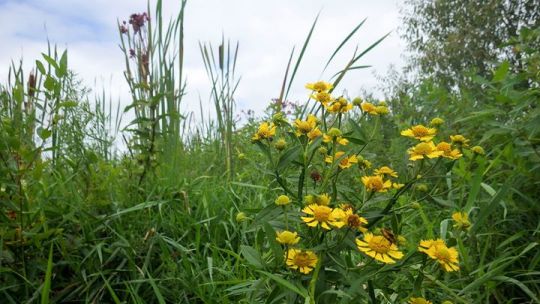
Abstract
In order to preserve and value plant Non Timber Forest Products (NTFPs) in the coastal area, a study was conducted in three villages of Yabassi and Mouankoalso in Cameroon. Ethnobotanical surveys, interviews, and direct observations were carried out with 132 households notably (74 and 58 respectively). Results showed that social class whose age was between 15 and 60 years was the main workforce in the collection of NTFPs of both localities. Females and children were most involved in the collection of these NTFPs. Agriculture, fishing and hunting were the main activities identified in both study areas. It was observed that 67 and 71 species, respectively inYabassi and Mouanko,were the most used. The types of uses were food, traditional medicine, traditional rites and timber. The commercialized forest species were: Baillonella toxisperma, Garcinia kola, Irvingia gabonensis and Scorodophleus zenkeri. Four main collection toolswere perch, machete, ax and saw.Picking and collection were the most used processes.For local uses of forest resources, the results indicated that the sustainability of timber resources use was not compromised, because their useswere marginal. However, the sustainability of local uses of NTFPs is uncertain. Economic or food dependency of local people on these resources, their representation in the forest and the importance of the forest for these peoplealso compromised the sustainability of local uses of these resources. Sustainable farming and efficient conservation need to be envisaged for promote and perpetuate exploitation of NTFPs in both localities.
Get the original articles in Source: Ethnobotanical study of plant non timber forest products in the coastal area of Cameroon: Cases of Yabassi and Mouanko
Journal Name: Journal of Biodiversity and Environmental Sciences (JBES)
Published By: International Network for Natural Sciences
0 notes